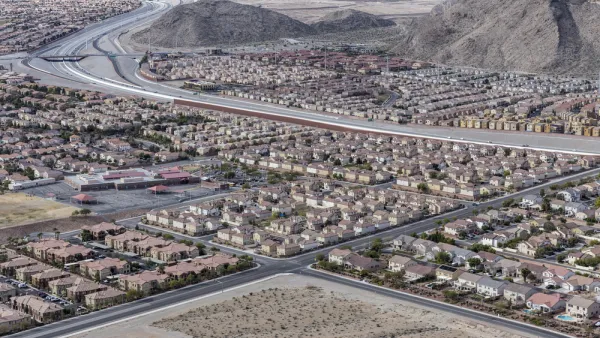New York City is changing the way poverty in the city is defined, while the Federal government is considering a bill to do the same. Planetizen Assistant Editor Nate Berg reports in The Christian Science Monitor.
"For the federal government, the concept of poverty is simple. If a typical family of four earns less than $21,100 a year, they're poor. If a single working woman makes less than $10,787, she's in poverty.
It doesn't matter whether these people live in Omaha, Neb., where the average apartment rents for $600 a month, or in New York City, where a similar apartment costs $1,600 a month. That's the way it's been since the federal government decided how to measure poverty in the mid-1960s.
Now, a steadily growing number of experts and policymakers argue that the poverty line should look like a wave, fluctuating with geography. That's the way New York officials see it, too. Last month, they unveiled a first-of-its-kind poverty measure that includes the city's actual costs of living.
'It really changes the picture of what the current face of poverty is,' says Linda Gibbs, New York's deputy mayor for health and human services."
FULL STORY: Who's poor? It depends on where you live, some say.

National Parks Layoffs Will Cause Communities to Lose Billions
Thousands of essential park workers were laid off this week, just before the busy spring break season.

Retro-silient?: America’s First “Eco-burb,” The Woodlands Turns 50
A master-planned community north of Houston offers lessons on green infrastructure and resilient design, but falls short of its founder’s lofty affordability and walkability goals.

Delivering for America Plan Will Downgrade Mail Service in at Least 49.5 Percent of Zip Codes
Republican and Democrat lawmakers criticize the plan for its disproportionate negative impact on rural communities.

Test News Post 1
This is a summary

Test News Headline 46
Test for the image on the front page.

Balancing Bombs and Butterflies: How the National Guard Protects a Rare Species
The National Guard at Fort Indiantown Gap uses GIS technology and land management strategies to balance military training with conservation efforts, ensuring the survival of the rare eastern regal fritillary butterfly.
Urban Design for Planners 1: Software Tools
This six-course series explores essential urban design concepts using open source software and equips planners with the tools they need to participate fully in the urban design process.
Planning for Universal Design
Learn the tools for implementing Universal Design in planning regulations.
EMC Planning Group, Inc.
Planetizen
Planetizen
Mpact (formerly Rail~Volution)
Great Falls Development Authority, Inc.
HUDs Office of Policy Development and Research
NYU Wagner Graduate School of Public Service





























